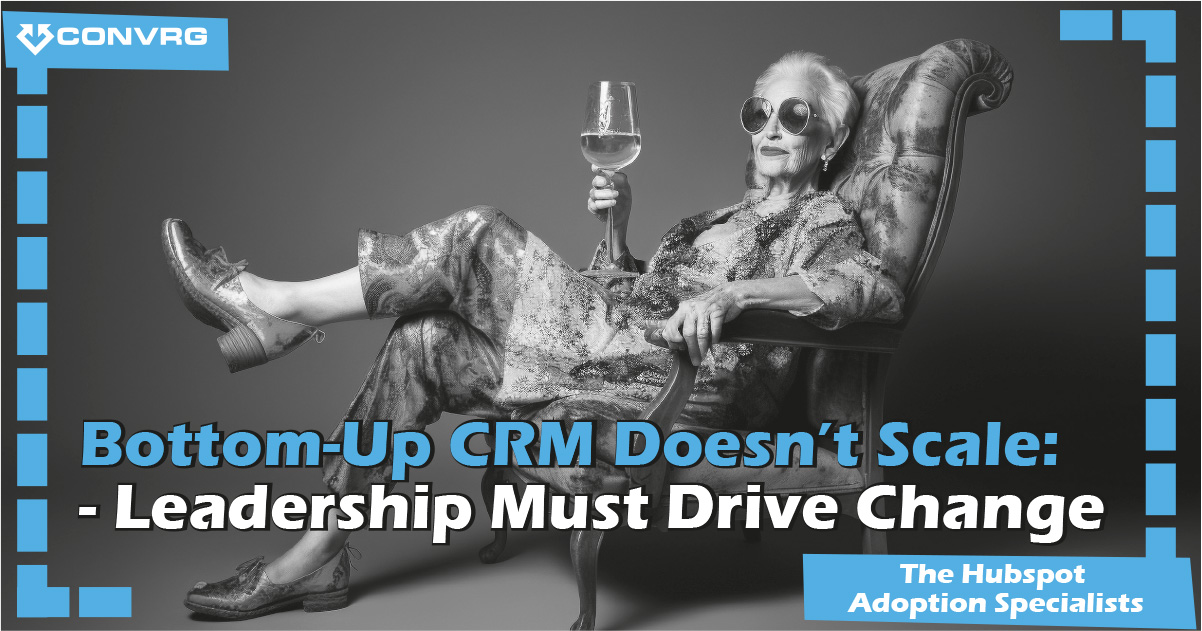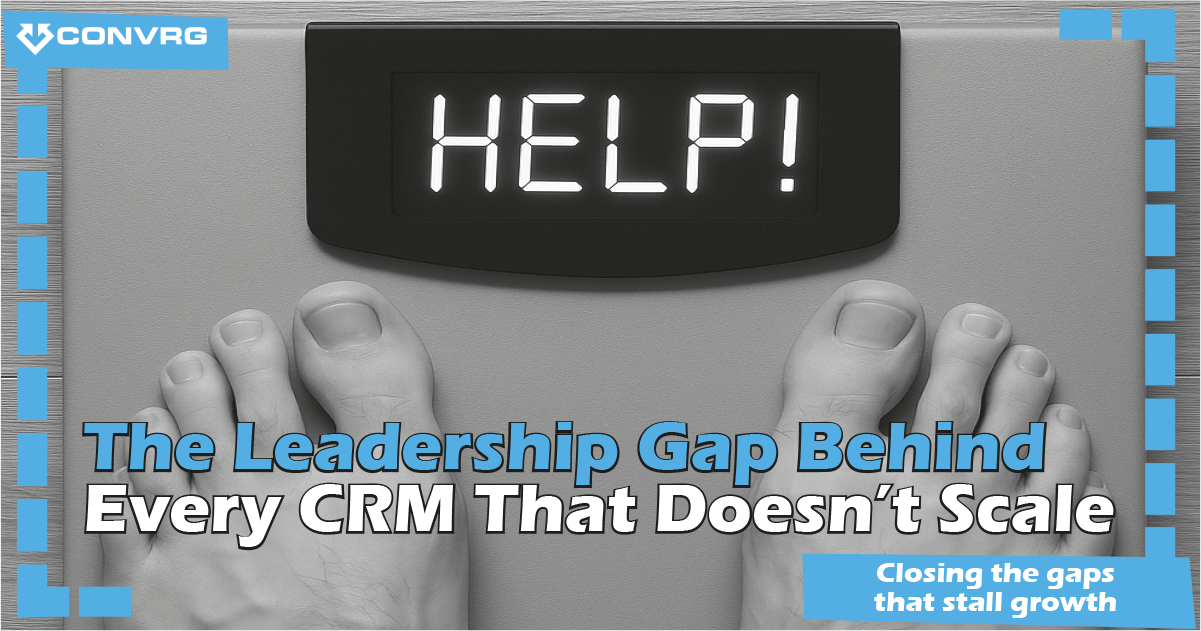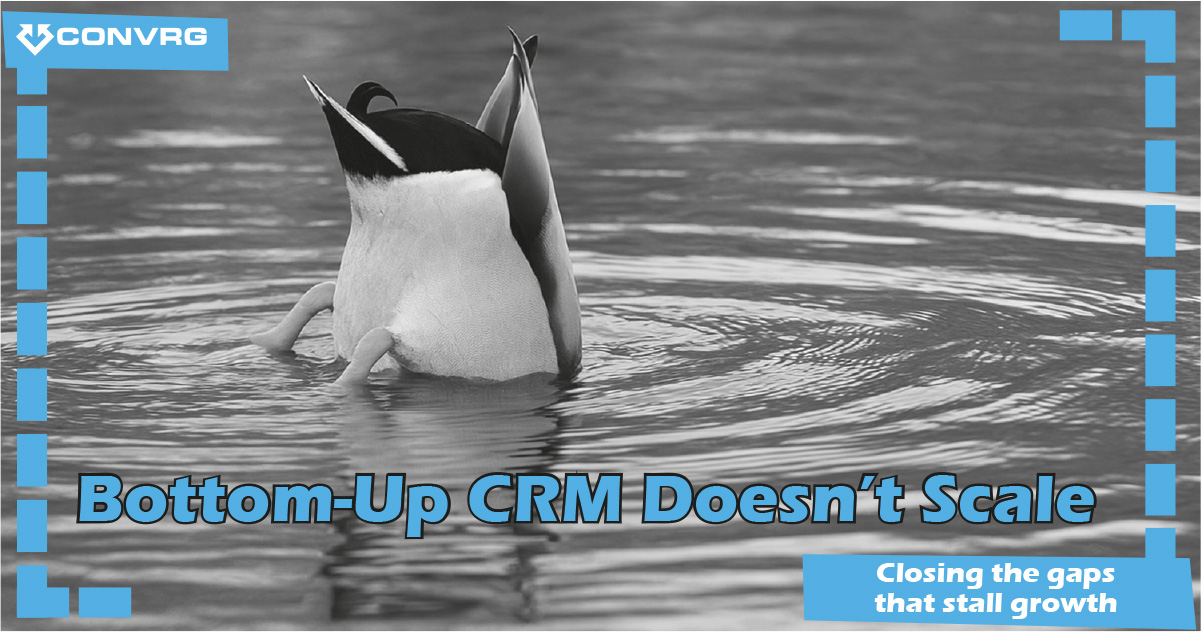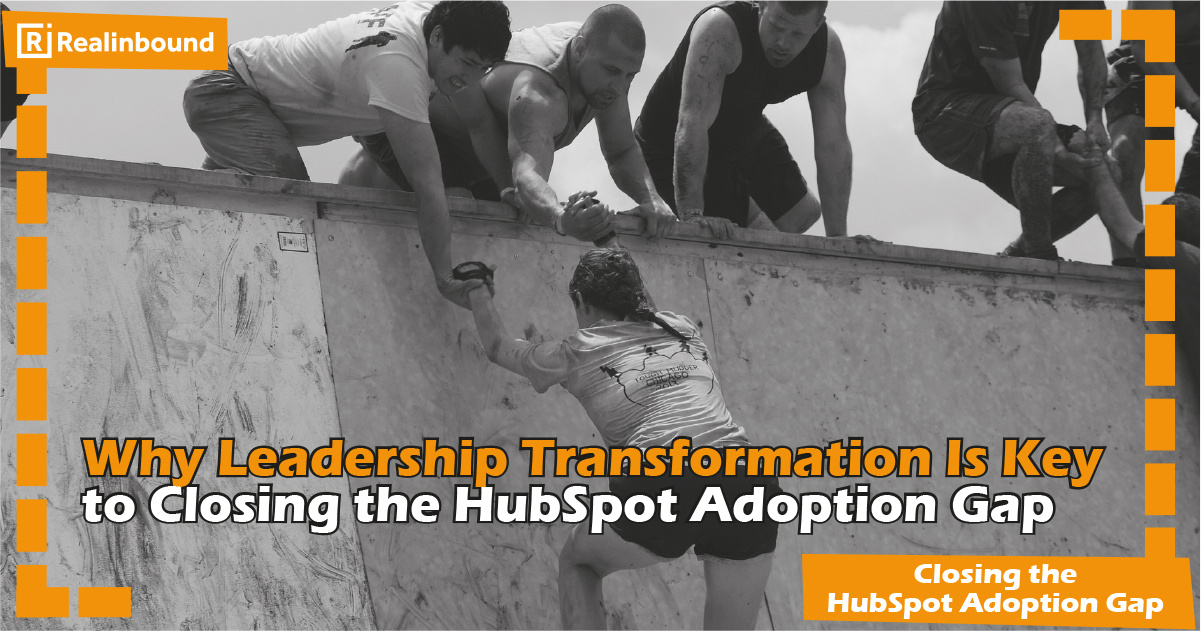When Good Tools Still Fail
You’ve invested in HubSpot. The platform is live. Training has been rolled out. Your sales and marketing teams are in the system—sort of.
But the results aren’t there.
Data is incomplete. Reports don’t reflect reality. Workflows aren’t being followed. And adoption feels more like tolerance than transformation.
Sound familiar?
It should. This is one of the most common patterns we see in enterprise manufacturers and scaling B2B firms. And it’s not a HubSpot issue.
It’s a leadership issue.
In this article, we’ll unpack why CRM adoption fails when it’s driven from the bottom-up—and how leadership-led adoption through the SIMPLIFI Framework is the only route to sustainable, scalable CRM success.
The Myth of “User-Led” CRM Adoption
A common assumption in CRM implementation is this:
“If we train the team, the system will work.”
This sounds logical—but in practice, it fails. Here's why:
- Sales teams default to what they know
- Marketing over-customises or underuses the platform
- Customer service improvises to meet day-to-day needs
- Leadership loses visibility because nobody trusts the data
The result? Disconnected systems, poor data quality, and rising frustration across the board.
The real mistake isn’t choosing the wrong platform. It’s expecting frontline teams to drive strategic alignment from the ground up.
That’s not their job. That’s yours.
Why Bottom-Up Adoption Fails in Complex Businesses
In small, early-stage companies, bottom-up can work for a while. Teams are close-knit. There’s energy, hustle, and shared vision.
But in larger or more complex organisations—especially across multiple departments or regions—it collapses.
Here’s why:
- No Strategic Context
Teams aren’t briefed on how CRM links to business goals. They use HubSpot like a toolset, not a business system.
- No Process Ownership
Without process mapping, every team makes their own version of “how things work.” Lead handovers fail. Sales cycles get messy.
- No Unified Standards
Everyone creates their own fields, tags, lists, and reports. Before long, CRM becomes unmanageable.
- No Leadership Accountability
When no one at the top owns CRM performance, nobody takes it seriously. It becomes “just another system.”
But Isn’t This a Change Management Problem?
Yes—but it’s more than that.
This isn’t just about managing resistance. It’s about recognising that systems don’t change behaviour—leadership does.
CRM adoption is a mirror. If leadership treats it as an IT task, the rest of the company will follow suit. If it’s buried in the marketing team, sales won’t see it as their problem.
The reality is:
You can’t delegate transformation.
You can only lead it.
Case in Point: The Manufacturing Maze
Let me give you a common scenario:
A multi-division manufacturing firm rolls out HubSpot across sales and marketing. Each division has slightly different processes. Some work with reps. Others work directly with distributors. Marketing wants campaign attribution. Sales just wants deal data.
Leadership signs off on HubSpot and delegates implementation to a project manager.
Six months in:
- Teams are using the system inconsistently
- Campaigns aren’t tracked properly
- Sales managers rely on spreadsheets
- Leadership doesn’t trust the reports
- Adoption plateaus, and ROI stalls
Now the CEO thinks HubSpot was a bad investment.
But HubSpot isn’t the problem.
The real problem is that nobody owned alignment from the top.
The Only Thing That Scales: Leadership
At CONVRG, we’ve worked with dozens of companies where CRM was seen as a departmental tool, not a strategic system.
Every time we’ve seen long-term adoption success; it started with one thing: executive ownership.
When leadership steps in and says:
“This system will reflect how our business works—so we can run it better,”
everything changes.
- Teams get aligned.
- Processes get mapped.
- Data gets cleaner.
- And HubSpot becomes a source of insight, not anxiety.
So how do you make that shift?
The SIMPLIFI Framework: A System for Scalable Adoption
To fix this, we use the SIMPLIFI Framework—a management-led approach to embed CRM into business strategy, not just operations.
Each letter of SIMPLIFI represents a step in building CRM systems that work with the business, not against it.
Let’s look at each one—and how it changes the game for leadership.
S – Setting the Scene
Before anything is configured, leadership sets clear objectives:
- What’s the role of CRM in business growth?
- What metrics matter?
- Who’s accountable for what?
This isn’t a workshop. It’s a declaration.
Without this, teams interpret CRM their own way—and you lose cohesion.
I – Interview Everyone
We speak with sales, marketing, customer service, finance, ops—anyone who touches customers or data.
Why?
Because adoption problems are often cultural, not technical. We surface unspoken friction, duplicate processes, and conflicting KPIs.
Only by listening can you lead effectively.
M – Map the Processes
This is where leadership gets clear on:
- How leads move through the funnel
- Where handoffs occur
- What data must be captured, by whom, and when
We co-create a visual map that becomes the blueprint for how HubSpot should actually work.
P – Plan the Way Forward
We define a phased roadmap, aligned with strategic priorities.
This includes:
- Milestones for adoption
- Data clean-up and standardisation
- Role-based training
- Reporting set-up that reflects leadership KPIs
Planning with leadership—not after the fact—prevents drift.
L – Lead the Adoption
This is the real differentiator.
CRM governance isn’t a checklist. It’s a rhythm:
- Regular leadership check-ins
- Usage audits
- KPI reviews
- Champion networks
Leaders must be visible, active, and accountable.
I – Implement the Changes
Now and only now, we configure the CRM.
This is where your systems team or implementation partner builds:
- Workflows
- Automations
- Dashboards
- Training materials
But because the groundwork is done, it sticks.
F – Fix What Breaks
CRM is never “done.”
We embed feedback loops to review adoption, spot friction, and evolve the system over time.
Leadership doesn’t walk away at this stage—they stay involved.
I – Iterate…
The Change Manager's Role
Now, what if you’re not in the C-suite?
Let’s say you’re a change manager or RevOps lead trying to fix a system that’s not working.
You can still lead—from the middle.
- Use the language of cost and risk to engage leadership
- Show the real cost of inaction using tools like our Hidden HubSpot Tax Calculator
- Frame your pitch as a strategic unlock, not a system fix
- Use the SIMPLIFI Framework as a blueprint for what could be done
Leaders don’t want another problem. They want confidence in a solution.
Give them that.
Signs You’re Stuck in Bottom-Up CRM
If you're not sure whether your organisation is suffering from bottom-up CRM, here’s what to look for:
- CRM is treated as an “ops tool” not a business system
- Different teams use HubSpot in different ways
- Data is unreliable or duplicated
- No one “owns” the CRM at the leadership level
- You keep buying add-ons or consultants—but nothing changes
- Dashboards don’t reflect real performance
Sound familiar?
It’s time to flip the model.
What Happens When Leadership Steps In
We’ve seen the shift dozens of times.
Once leadership owns the CRM strategy, adoption changes fast:
- Systems align with how the business actually works
- Dashboards support decisions, not just reporting
- Teams stop fighting the system—and start relying on it
- Data quality improves
- ROI shows up
HubSpot becomes the engine for revenue, not a line item in the tech stack.
What to Do Next
If you're ready to lead CRM transformation from the top—or influence it from the middle—start with the SIMPLIFI Email Series.
Over 7 emails, we break down each part of the framework, share insights from the field, and give you tools you can apply right away.
[Access the SIMPLIFI Email Series]
Whether you’re the one signing off or the one championing change—you can’t scale a CRM from the bottom.
Start from the top. Start with SIMPLIFI.
Final Word from Me
I’ve been in your seat.
I’ve overseen CRM projects from the agency side, the in-house side, and the leadership side. And what I know now is this:
Systems don’t fail. Leadership fails to embed them properly.
If you’re still treating CRM as an afterthought—or something you “hand off” to the team—it will never become the engine it could be.
But if you step in and lead?
Everything changes.
Let’s make that happen.
Ready to close the adoption gap?
CRM Adoption Scorecard
It’ll show you where you sit today and what’s blocking adoption.
SIMPLIFI Framework Guide
It breaks down the steps in more detail so you can see the path forward.








